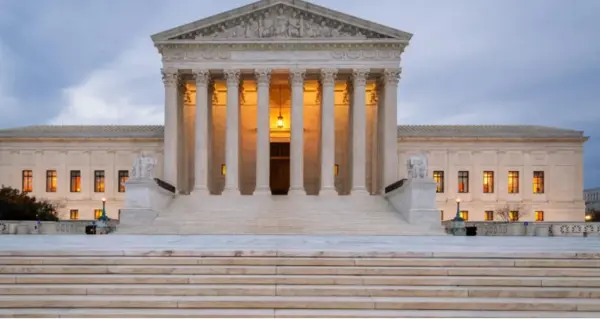A seminal case in the fields of corporate social responsibility and property law is the Great Western Buildings lawsuit dispute. Legal professionals, businesses, and the general public have all taken an interest in this complicated legal dispute since it involves numerous parties, complicated legal doctrines, and substantial financial ramifications. We will examine the lawsuit’s background, the legal arguments put out, any possible repercussions, and the lawsuit’s wider impact on industry practices and regulatory frameworks in this extensive piece.
The situation of the Case
The Great Western Buildings lawsuit has its origins in a sequence of incidents that transpired over several years. Prominent real estate and Construction Company Great Western Buildings was charged with multiple offenses, including negligence in building procedures, breach of contract, and failure to comply with safety rules. The plaintiffs, a broad group that included companies, private citizens, and local government organizations, claimed that the company’s negligence caused serious financial losses as well as safety risks.
Great Western Buildings’ building of a multi-use facility served as the impetus for the conflict. The idea was first praised as a cutting-edge creation, but it quickly became entangled in controversy. There were reports of poor-quality building materials, a disdain for building rules, and taking shortcuts to finish projects faster. These problems were said to connect to safety hazards, property damage, and sharp drops in property values.
Arguments and Proceedings in Law
A complex legal struggle with a wide range of accusations and defenses followed. The main argument put forth by the plaintiffs was that Great Western Buildings litigation had not lived up to its contractual duties regarding quality and safety standards. They maintained that in addition to being a breach of contract, the company’s conduct demonstrated recklessness and a flagrant disrespect for public safety.
However, the success of Great Western Buildings’ defense rested on refuting the allegations of carelessness and violation of contract. They said that all construction work followed all applicable codes and regulations and that any problems were unfound or overstated about their work. Furthermore, they contended that a portion of the claimants were partly responsible for the damages since they had neglected to maintain their properties.
Moreover, As the matter moved through the court system, a thorough analysis of industry norms, contractual agreements, and building codes was required. The process was made more complex by the testimony of expert witnesses from the real estate, construction, and safety industries.
Implications for Safety and Finances
Additionally, The Great Western Buildings litigation had enormous financial stakes. The plaintiffs demanded payment for a range of losses, including associated expenditures, depreciation, and repair expenses. The magnitude of the alleged misbehavior highlights the claim for damages, which total in the tens of millions.
In addition to the financial consequences, the case brought important safety issues to light. Moreover, Concerns over the risks to the residents and businesses in the impacted premises generated the claims of utilizing inferior materials and disobeying safety regulations. This part of the lawsuit emphasized how construction companies must follow safety regulations and the possible repercussions if they don’t.
Effect on Industry and Reaction to Regulations
The Great Western Buildings lawsuit litigation impacted the real estate and construction sectors. It forced an evaluation of industry standards, especially about adherence to contractual duties and building codes. To avoid such legal entanglements, many businesses started to closely examine their processes, which resulted in a general emphasis on quality control and regulatory compliance.
Legislators and regulatory agencies are also impact by the litigation. Furthermore, There have been requests for more stringent building code enforcement and thorough project oversight in response to the concerns brought forth. Several jurisdictions initiated reevaluating their rules and regulations to plug legal gaps and improve accountability within the building industry.
Acquiring Knowledge from the Great Western Buildings Case
The Great Western Buildings litigation teaches businesses about corporate ethics and responsibility in addition to being a legal battle. It emphasizes how crucial it is to respect contractual duties, be transparent, and follow moral principles.
This case offers industry professionals a useful resource for understanding how to negotiate the tricky junction between legal requirements and business practices.
To sum up
One lesson to learn from the Great Western Buildings lawsuit litigation is the value of moral business conduct, following safety regulations, and the possible legal repercussions of carelessness and contract violations. Also, As the case develops, its effects on industry norms, and regulatory policies. Moreover, legal precedents are expect to far-reaching beyond the parties’ immediate engagement. Also, At the nexus of law, business ethics, and public safety. It is a noteworthy case study with insights applicable to a wide range of industries and academic fields.
FAQs
Q1: What were the main causes of the Great Western Buildings Lawsuit?
A: Differing property interpretations and contract disputes ignited a legal fight, leading to the lawsuit.
Q2: What impact did the lawsuit’s verdict have on real estate practices going forward?
A: The decisions set a precedent, reshaping industry practices and emphasizing legal factors in real estate deals.
Q3: Which key legal arguments were made throughout the proceedings?
A: The lawsuit focused on key concerns, shaping legal discourse.
Q4: Was arbitration used to settle the lawsuit or were court proceedings used?
A: Legal arguments and testimony in arbitration/court proceedings were instrumental in settling.
Q5: How did the lawsuit impact pending cases in real estate?
A: The lawsuit’s decisions set standards, establishing legal precedents.
Q6: How did the lawsuit alter perceptions of contractual obligations in real estate deals?
A: Major changes prompted a reevaluation of contractual duties, emphasizing careful examination.
